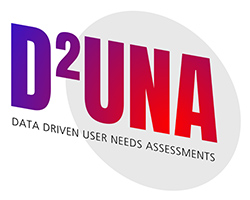
Data-driven User Needs Assessments

Workplaces of the future implicate multi-layered human-machine interactions in interconnected and constantly changing working environments. Performance measures such as overall plant effectiveness have long since ceased to be the key indicator when it comes to sustainable workplace and machine optimization. The increasing demands on workers require an even stronger pursuit of human-centered quality.
Human-centered quality is the extent to which requirements regarding usability, accessibility, user experience, and avoidance of use-related damage are fulfilled (Ergonomics of human-system interaction - Part 11: Usability: Terms and concepts (ISO 9241-11:2018)).
Workplaces that violate quality features of human-centered design have a direct impact on workers' behaviors, performance, and their commitment to the company. Therefore, it is essential to design workplaces that meet the requirements for human-centered quality and thus enable workers to perform better in the long run through positive user experience (UX). Particularly partially automated workplaces offer the possibility of including machine data and comparing it with user data.
